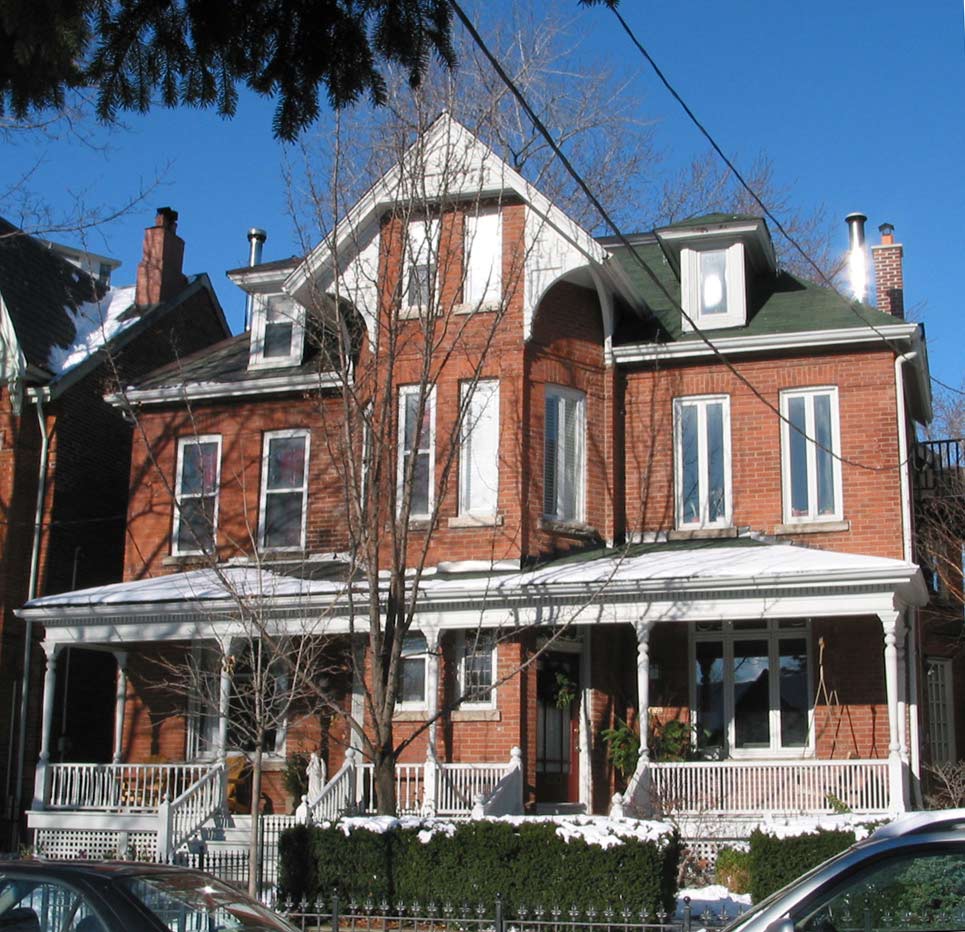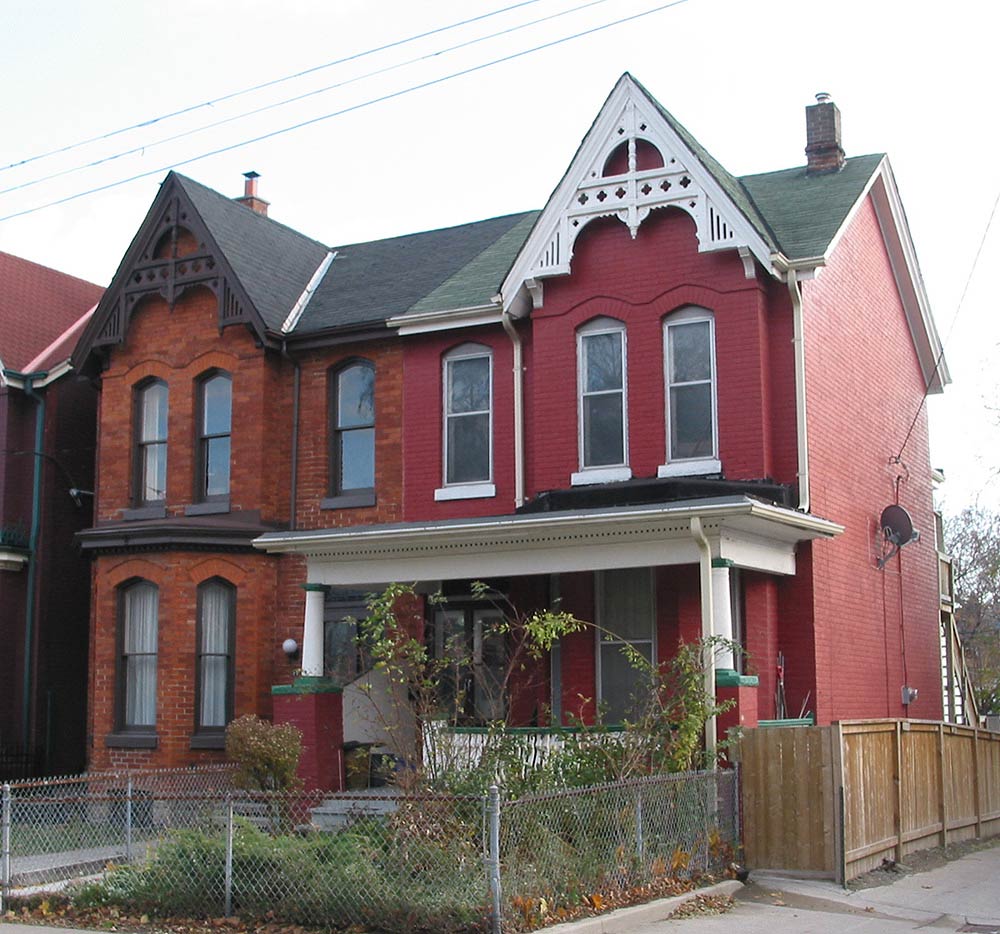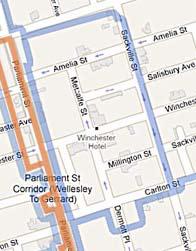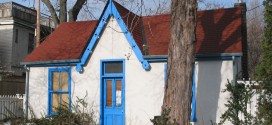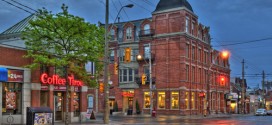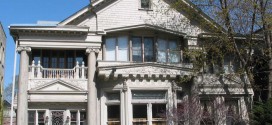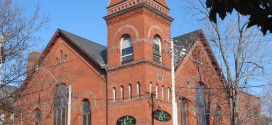Earlier in the year, we posted a profile on Gothic Revival architecture in Cabbagetown, outlining the style’s various characteristics with examples from the community. As it so happens, Amelia Street, a division of the Cabbagetown Metacalfe Heritage Conservation District, showcases two homes of the Gothic Revival style worth discussing:
George Caden / Albert Long House (20-22 Amelia Street)
As a semi-detached residential home, complete with three floors, this property is a notable example of Gothic Revival architecture in the neighbourhood. Completed in 1901, the home displays many prominent characteristics of the late Victorian Era, as can be seen in its steeply pitched gabble roof with two dormers on either side, as well as the modest presence of two ribbed faults contained within exterior flying buttresses.
While this house also features many elements not categorized by the Gothic Revival style — the plain, rectangular windows, the single-stacked chimneys, and the extended white-porch — the fundamental design of this home is still worth taking note of.
John Lumber / William J. Sigsdin House (25-17 Amelia Street)
Although built over a decade earlier( in 1888), this two- floor, semi-detached property resembles the Carpenter Gothic style, a modernized version of the Gothic Revival. While there are prominent details of the Gothic Revival found — the asymmetrical layout, gabled rooftop, and hood molds — the large bargeboard found underneath the gables along with the home’s unorthodox colour scheme, indicate that this is a variation of Gothic Revival architecture, not a pure example.
Cabbagetown Metacalfe Heritage Conservation District
The layout of Amelia street was finished in 1844, despite the fact these homes were built half a century later. As with many other areas in the Heritage Conservation District, this street’s design includes a narrow setback for the houses from the side walk, small front yards decorated with hedges or fences, overhead wires (20th century), and large deciduous trees for privacy and shade. The rows of Victorian homes found on this street is a defining element for the community. The combination of styles, materials, and ad-ons, make for an eclectic display of well preserved historic architecture.
The two properties highlighted in today’s post are only two examples of many great architectural structures in the Metacalfe Heritage Conservation District.
 Cabbagetown Info Events, reviews and what's happening in Cabbagetown, Toronto
Cabbagetown Info Events, reviews and what's happening in Cabbagetown, Toronto
